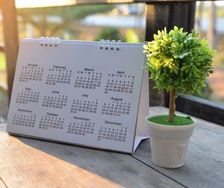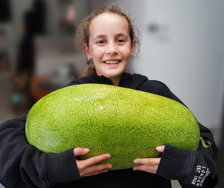Yates Account
Join now
Create a Yates account today!
Sign up to join the Yates Garden Club for monthly e-mails packed with seasonal inspiration, tips for success & exclusive promotions.
Plus if you’re a Garden Club member you can take part in the Yates Growing Community - a blog to share successes, get advice & win prizes in fun challenges along the way!

Forgot password
Enter the email address associated with your account, and we'll email you a new password.

Cold and frosty conditions can strike unexpectedly and cause a lot of damage to your plants. It's important to protect vulnerable plants, particularly if they're seedlings or showing tender young growth.
Subtropical or tropical plants will definitely need protection, as they're invariably frost-sensitive.
Here are some of our favourite tactics to help protect vulnerable plants from frost damage:
- Move potted plants to a more protected area such as a deck or patio, or up against a wall.
- Protect small seedlings on frosty nights by creating cloches out of plastic soft drink bottles that have been cut in half.
- Cover sensitive plants with frost or shade cloth. You can construct a temporary cloth cloche with a frame to hold the cloth up, to make a protective tent over your plants. Make sure that the cloth reaches to the ground around all the edges. Bricks or pavers are a handy way to weigh down the edges of the cloth on the ground. Make sure the cloth isn't directly touching your plants, there needs to be space between them.
- A popular method to construct a cloche frame is to hammer two 40cm lengths of steel rebar into the ground to make pegs, then push each end of a length of 15mm alkathene pipe onto each steel peg, to form a 'hoop'. Make a line of hoops to drape the frost cloth over, long enough to cover a row of vegies. Bunch the cloth into a knot at each end and pin them down to the ground.
- A very simple alternative is to hammer in a Y post (AKA waratah standard) at each end of your vegie row, stretch a length of wire between them and just drape the frost cloth over the central wire to make a simple tent. Make sure the ends are closed in (you can knot them together loosely) and reach right down to the ground.

- To protect young citrus or avocado trees, hammer in four Y posts around the tree, one on each corner. Stretch wire around the top corners of the posts. Drape frost cloth over the frame, covering the entire top and reaching right down to the ground.
- Late frosts can be very destructive to crop yields of spring flowering fruit trees, which benefit from having frost cloth draped over the entire tree for the night.
- Keep garden soil moist, as moist soil is better able to absorb and store heat during the day. Dry soil can exacerbate frost damage.
- Don’t prune off any frost-damaged foliage until the risk of frost has passed, as it can encourage vulnerable shoots of new growth. Also, the damaged foliage can help protect healthy growth underneath.
- Indoor plants should also be protected from the cold. Move indoor plants away from bare windows (they can radiate cold on frosty nights) and chilly draughts coming in under doorways. Many plants that we grow indoors have originated from tropical climates and definitely won’t appreciate being exposed to low temperatures!
Winter doesn't need to be dull! Add colour and fragrance to your winter garden with flowers, flowering trees and shrubs.
Winter Gardening
Here's how you can help protect your garden from chills and frost this winter.
Garden Facts & Trivia
Enjoy some jaw-dropping secrets and quirky facts about plants and gardening. Keep an eye out for these during your next trivia event!
Garden Pruning Tips
There's an old gardener's saying, that goes “wander, ponder; and prune.” We can help you put that simple proverb into practice - read on for our quick and easy tips for successful pruning.












Share
Share this article on social media